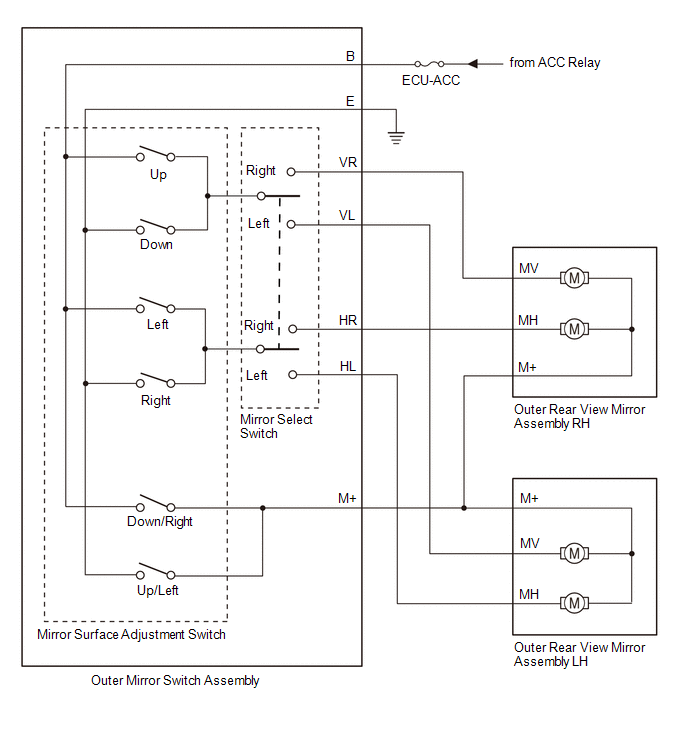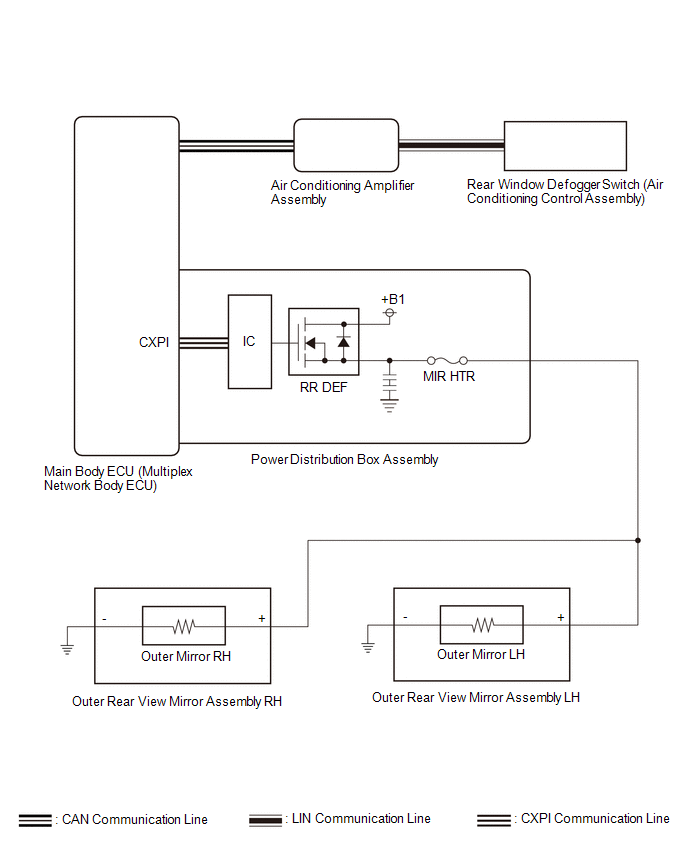Toyota Yaris: Power Mirror Control System / System Diagram
SYSTEM DIAGRAM
ELECTRICAL REMOTE CONTROL MIRROR FUNCTION

POWER RETRACT MIRROR FUNCTION

MIRROR HEATER FUNCTION

 Parts Location
Parts Location
PARTS LOCATION ILLUSTRATION
*1 OUTER REAR VIEW MIRROR ASSEMBLY LH - OUTER MIRROR LH *2 OUTER REAR VIEW MIRROR ASSEMBLY RH - OUTER MIRROR RH *3 OUTER MIRROR SWITCH ASSEMBLY *4 NO...
 System Description
System Description
SYSTEM DESCRIPTION POWER MIRROR CONTROL SYSTEM DESCRIPTION (a) This system has the following functions: electrical remote control mirror function, power retract mirror function, auto power retract mirror function and mirror heater function...
Other information:
Toyota Yaris XP210 (2020-2025) Reapir and Service Manual: Components
COMPONENTS ILLUSTRATION *1 REAR SEATBACK ASSEMBLY *2 BENCH TYPE REAR SEAT CUSHION ASSEMBLY *3 REAR SEAT CUSHION LOCK HOOK - - Tightening torque for "Major areas involving basic vehicle performance such as moving/turning/stopping" : N*m (kgf*cm, ft...
Toyota Yaris XP210 (2020-2025) Reapir and Service Manual: Parts Location
PARTS LOCATION ILLUSTRATION *1 WINDSHIELD WIPER MOTOR ASSEMBLY *2 WINDSHIELD WASHER MOTOR AND PUMP ASSEMBLY *3 NO. 1 ENGINE ROOM RELAY BLOCK AND NO. 1 JUNCTION BLOCK ASSEMBLY - WIPER FUSE - WASHER FUSE - WIPER RELAY *4 RAIN SENSOR ILLUSTRATION *1 STEERING WHEEL SWITCH HOUSING *2 WINDSHIELD WIPER SWITCH ASSEMBLY *3 STEERING SENSOR *4 WINDSHIELD WIPER RELAY ASSEMBLY *5 MAIN BODY ECU (MULTIPLEX NETWORK BODY ECU) *6 POWER DISTRIBUTION BOX ASSEMBLY - WIPER RR FUSE - ECU-IGR NO...
Categories
- Manuals Home
- Toyota Yaris Owners Manual
- Toyota Yaris Service Manual
- Opening and Closing the Liftgate/Trunk Lid
- Adjustment
- Immobilizer System
- New on site
- Most important about car
Break-In Period
No special break-in is necessary, but a few precautions in the first 600 miles (1,000 km) may add to the performance, economy, and life of the vehicle.
Do not race the engine. Do not maintain one constant speed, either slow or fast, for a long period of time. Do not drive constantly at full-throttle or high engine rpm for extended periods of time. Avoid unnecessary hard stops. Avoid full-throttle starts.
Copyright © 2025 www.toyaris4.com
